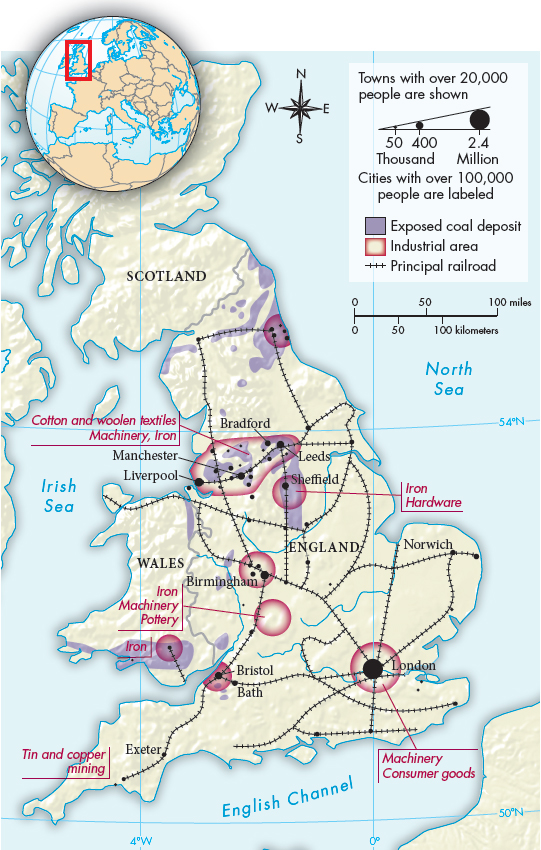Understanding Western Society
Printed Page 617
The Coming of the Railroads
The first steam locomotive was built by Richard Trevithick after much experimentation. George Stephenson acquired glory for his locomotive named Rocket, which sped down the track of the just-

The significance of the railroad was tremendous. It dramatically reduced the cost and uncertainty of shipping freight over land. This advance had many economic consequences. Previously, markets had tended to be small and local; as the barrier of high transportation costs was lowered, markets became larger and even nationwide. Larger markets encouraged larger factories with more sophisticated machinery in a growing number of industries. Such factories could make goods more cheaply and gradually subjected most cottage workers and many urban artisans to severe competitive pressures. In all countries, the construction of railroads created a strong demand for unskilled labor and contributed to the growth of a class of urban workers.
Water travel was also transformed by the steam engine. French engineers completed the first steamships in the 1770s, and the first commercial steamships came into use in North America several decades later.